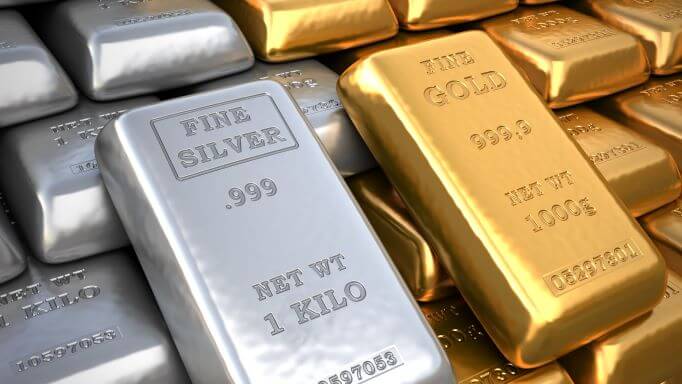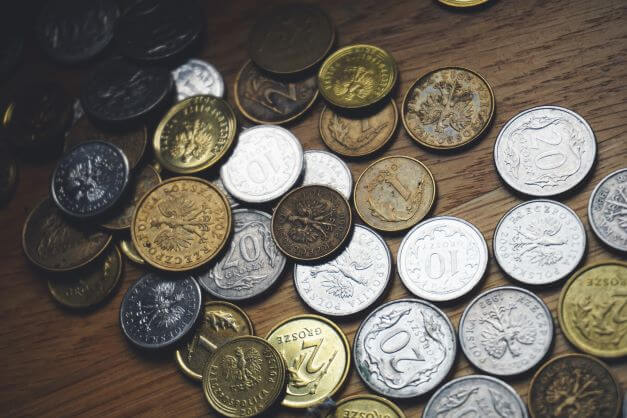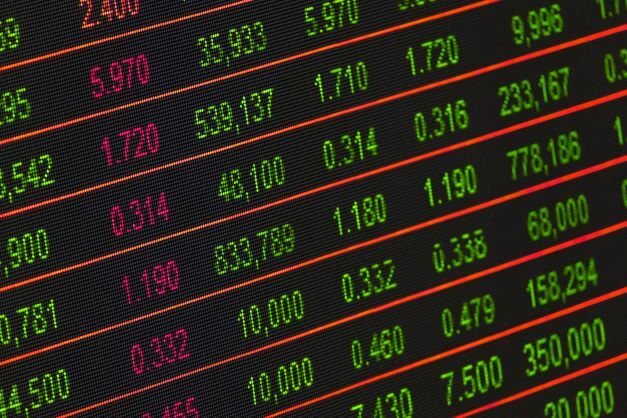Investing in precious metals has become increasingly popular over the past decade to diversify portfolios and protect against inflation. Investors have long seen precious metals as a safe haven for their money, offering stability and protection from market fluctuations. This article will introduce investing in precious metals, outlining the different types of investments available and their potential benefits.
The term’ precious metal’ encompasses a broad range of commodities used as value stores, such as gold, silver, platinum and palladium. These assets are often sought out due to their ability to preserve wealth during times of economic uncertainty or currency devaluation. They tend to hold their value better than other asset classes like stocks or bonds, which may be more volatile.
Investors looking to add exposure to these markets have multiple options at their disposal, from physical holdings of coins and bars to exchange-traded funds (ETFs) and derivatives contracts based on the underlying commodity prices. Each option comes with its own risks and rewards that must be carefully considered before making any investment decision.
What Are Precious Metals
Precious metals are a group of rare and valuable minerals that have been used as currency, jewellery, and other forms of wealth for centuries. They represent an important asset class in the world economy and can be considered a form of investment or security. Precious metals include gold, silver, platinum, palladium, rhodium, and iridium.
Gold is generally regarded as the most sought-after precious metal due to its scarcity, durability and intrinsic value. The intricate designs of gold coins date back centuries and are a sought after commodity today.
Silver has historically been seen as the second most popular choice among investors because it is more affordable than gold but still offers some protection against inflation.
Platinum and palladium also offer potential benefits such as increased rarity compared to gold or silver. Each type of metal has different properties, which must be taken into account when investing in them. It is crucial to understand how each one behaves differently before making any investments in precious metals.
Types Of Precious Metals
Now we know what precious metals are, and it is important to understand what types of metals are considered ‘precious’. Generally speaking, these include gold, silver, platinum and palladium. Other less common metals may also be classified as ‘precious’ depending on their rarity and market value at any given time.
Gold has long been seen as a symbol of wealth and power, making it one of the most popular choices for investors in precious metals. Gold tends to rise or fall with stock markets but usually holds its own against inflationary pressures. Silver is generally more volatile than gold yet still offers protection against inflation when other investments, such as stocks, are not performing well.
Platinum and palladium offer similar protection benefits to those provided by gold and silver but can also increase your portfolio diversification due to lower correlations between them and traditional assets like stocks. All four precious metals provide excellent investment opportunities that allow investors to gain exposure to non-traditional asset classes while maintaining some degree of stability during economic downturns.
Pros And Cons Of Investing In Precious Metal
Investing in precious metals is a viable option for many people. Precious metals can offer several advantages to investors, including hedging against inflation and potential tax benefits. These assets are also considered an essential part of any diversified investment portfolio due to their low correlation with other financial markets.
On the downside, investing in precious metals can be expensive, and the returns may not always match market expectations. The price of gold and silver can be affected by global economic factors such as currency values or political instability, which could result in unexpected losses. Furthermore, there is sometimes difficulty in accurately valuing these assets due to limited liquidity on certain exchanges.
Despite its drawbacks, investing in precious metals remains attractive for many individuals looking to diversify their portfolios or hedge against inflationary pressures. Understanding all the risks associated with this type of investment is vital before committing funds. As with any asset class, it is wise to seek professional advice when making decisions regarding investment in precious metals.
Factors To Consider Before Investing In Precious Metals
Investing in precious metals can be a lucrative venture, but weighing the pros and cons before jumping into such an endeavour is essential. Several factors should be taken into consideration when investing in precious metals.
The first factor to consider is the historical performance of the metal you intend to invest in. It is important to understand how its price has fluctuated over time so you can make an informed decision on whether or not this type of investment would be worthwhile for your portfolio. Additionally, understanding what drives demand for certain types of precious metals will help you determine which ones may have more potential for growth.
Another factor to think about when investing in precious metals is market liquidity. You want to ensure enough liquidity is available so that if you need to sell your investments quickly, you will avoid significant losses due to a lack of buyers or sellers. Knowing how much volume trades each day and open interest levels can give investors a better idea of the level of liquidity present within the marketplace.
Finally, it’s important to understand all applicable taxes and fees associated with investing in these metals; many countries impose significant taxes on profits from this type of trading. Doing some research beforehand can save considerable amounts of money down the road.
By carefully considering these factors and weighing them against one another, investors can make educated investment decisions and maximize their returns while minimizing risk exposure. Doing proper research ahead of time will ensure that investors gain greater insight into the complexities surrounding this particular asset class and significantly increase their chances for success.
Different Ways To Invest In Precious Metals
Precious metals are a popular investment option and can be acquired in many ways. Bullion coins, bullion bars, numismatic coins, exchange-traded funds (ETFs), futures contracts and mutual funds are some of the most common forms.
Bullion coins or bars refer to the physical form of gold, silver, platinum, or palladium, typically bought directly from sellers like banks or dealers. They come with a certificate of authenticity and are often more affordable than other methods since they do not incur higher premiums for their designs or rarity value.
Numismatic coins include rare collectable coins minted by governments over time; these usually carry high premiums due to their limited supply and historical significance but may also offer greater potential rewards when held for more extended periods.
ETFs allow investors to buy into an existing portfolio without purchasing each asset separately; this effectively lowers costs associated with investing in precious metals and provides diversification benefits.
Futures contracts offer leveraged exposure to commodities markets and allow investors to speculate on price movements without taking ownership of underlying assets. At the same time, mutual funds enable them to invest in various metal products through one transaction.
How To Buy And Sell Precious Metals
Once investors have decided to invest in precious metals, they must decide how to buy and sell these goods. There are various ways to purchase or liquidate one’s holdings, including online dealers, coin shops, and auctions.
When purchasing from a dealer, investors should ensure the business is reliable by researching its credentials and reputation. When buying items online, reviewing any return policies before making the transaction is important.
Additionally, when dealing with coins or bars made of gold or silver, it is essential to have them certified by a third-party organization such as Professional Coin Grading Services (PCGS) or Numismatic Guaranty Corporation (NGC). This will provide assurance regarding the authenticity and condition of the product purchased.
Selling at auction may be the best choice for those seeking liquidity for their investments quickly. Auctions often bring high prices above spot value if buyers find certain items desirable; however, additional charges may also be associated with auction sales, which could reduce profits.
Before bidding on items at an auction site like eBay or Heritage Auctions, purchasers should research all terms related to the deal before committing funds. Understanding how to buy and sell precious metals successfully can help investors maximize their returns on investing in this asset class over time.
Market Trends For Precious Metals
Precious metals have been a staple of many investors’ portfolios for centuries. Their value has fluctuated over the years, influenced by market conditions and world events. Like other investments, it is essential to understand trends in order to make informed decisions when investing in precious metals.
The price of gold is susceptible to global economic uncertainty due to its status as a safe-haven asset. When there are global crises or political turmoil, investors flock to gold as an alternative store of wealth, and prices tend to increase significantly. On the flip side, periods of strong economic growth can lead to reduced demand for gold and lower prices.
Silver follows similar patterns but is much more volatile than gold since it is used extensively in industrial applications such as electronics manufacturing. Platinum and palladium also experience significant price fluctuations based on supply and demand factors, primarily related to worldwide automobile production.
In summary, understanding the fundamental drivers influencing precious metal markets is essential for successful investment strategies in this sector. By studying macroeconomic indicators like GDP growth rates, inflationary pressures and currency exchange values, investors can identify potential opportunities within these dynamic markets.
Conclusion
Precious metals have been popular for centuries due to their perceived security and potential for long-term gains. Despite the risks associated with investing in precious metals, many advantages may make them an attractive choice for investors.
Before committing funds to purchase any precious metal, it is important to understand factors such as market trends, tax implications, liquidity needs, and storage requirements. Furthermore, understanding different ways to invest in precious metals will help investors choose the most suitable option for their circumstances.
With this knowledge and information at hand, investors can make informed decisions when considering whether or not to invest in precious metals. Ultimately, by considering all relevant variables and making prudent choices, investors can succeed when investing in these valuable resources.



